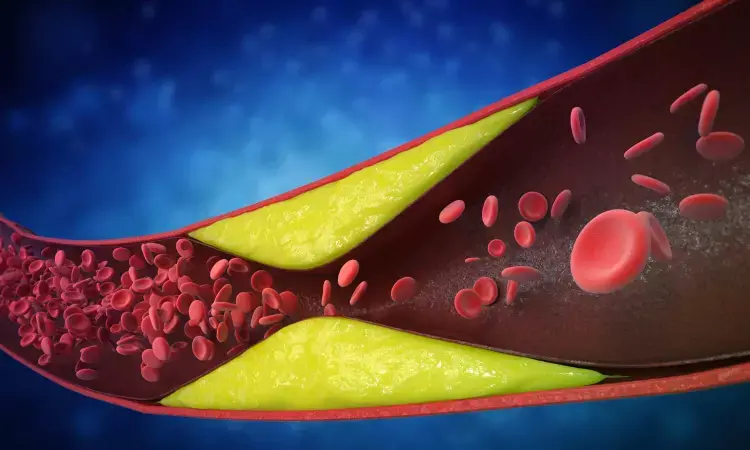- Home
- Medical news & Guidelines
- Anesthesiology
- Cardiology and CTVS
- Critical Care
- Dentistry
- Dermatology
- Diabetes and Endocrinology
- ENT
- Gastroenterology
- Medicine
- Nephrology
- Neurology
- Obstretics-Gynaecology
- Oncology
- Ophthalmology
- Orthopaedics
- Pediatrics-Neonatology
- Psychiatry
- Pulmonology
- Radiology
- Surgery
- Urology
- Laboratory Medicine
- Diet
- Nursing
- Paramedical
- Physiotherapy
- Health news
- Fact Check
- Bone Health Fact Check
- Brain Health Fact Check
- Cancer Related Fact Check
- Child Care Fact Check
- Dental and oral health fact check
- Diabetes and metabolic health fact check
- Diet and Nutrition Fact Check
- Eye and ENT Care Fact Check
- Fitness fact check
- Gut health fact check
- Heart health fact check
- Kidney health fact check
- Medical education fact check
- Men's health fact check
- Respiratory fact check
- Skin and hair care fact check
- Vaccine and Immunization fact check
- Women's health fact check
- AYUSH
- State News
- Andaman and Nicobar Islands
- Andhra Pradesh
- Arunachal Pradesh
- Assam
- Bihar
- Chandigarh
- Chattisgarh
- Dadra and Nagar Haveli
- Daman and Diu
- Delhi
- Goa
- Gujarat
- Haryana
- Himachal Pradesh
- Jammu & Kashmir
- Jharkhand
- Karnataka
- Kerala
- Ladakh
- Lakshadweep
- Madhya Pradesh
- Maharashtra
- Manipur
- Meghalaya
- Mizoram
- Nagaland
- Odisha
- Puducherry
- Punjab
- Rajasthan
- Sikkim
- Tamil Nadu
- Telangana
- Tripura
- Uttar Pradesh
- Uttrakhand
- West Bengal
- Medical Education
- Industry
Lomitapide significantly lowers LDLC in children with homozygous familial hypercholesterolemia: phase 3 trial topline results

According to topline results from a phase 3 trial, Lomitapide was associated with statistically significant reductions in low-density lipoprotein cholesterol (LDL-C) in children with homozygous familial hypercholesterolemia (HoFH).
Dr Joe Wiley, CEO of Amryt Pharma, commented: “We are encouraged by these important additional results regarding the efficacy of lomitapide in treating children with HoFH. This is good news for patients and their families.”
Top Line Results
A total of 46 pediatric patients were enrolled, with 43 patients completing the run-in phase and entering the efficacy phase. 20 patients were between 5 and 10 years of age. 23 patients were between 11 and 17 years of age. 88% had genetic confirmation of HoFH. The mean low density lipoprotein cholesterol (LDL-C) at baseline was 436 mg/dl (SD 189).
Primary Endpoint
The study met its primary endpoint with a clinically and statistically meaningful result. Percent change in LDL-C at Week 24 compared to baseline: mean reduction 54%, p <0.0001 (95% CL: -62% to -45%, p<0.0001) from baseline to week 24 in LDL-C, for the overall group of patients (n=43 patients).
This was consistent between the two pre-specified age groups:
• Patients aged 5 to 10 years (n=20): a mean reduction of 57% (95% CI: -68% to -45%) from baseline to week 24 in LDL-C
• Patients aged 11 to 17 years (n=23): a mean reduction of 51% (95% CI: -62% to -40%) from baseline to week 24 in LDL-C
Key Secondary Endpoints
Statistically meaningful reduction in key lipid parameters: Percent change at week 24 compared to baseline in the following lipid parameters:
• Mean reduction in non-high density lipoprotein cholesterol (non-HDL-C) : 54% (95% CI -62, -45%), p <0.0001
• Mean reduction in total cholesterol (TC) : 50% (95% CI -58, -42%), p <0.0001
• Mean reduction in very low-density lipoprotein cholesterol (VLDL-C) : 50% (95% CI -59, -41%), p <0.0001
Safety was consistent with the known profile of lomitapide, no new signal identified
• 41 patients completed the 24-week efficacy phase. 2 patients withdrew due to adverse events
• 5 patients had serious adverse events, with only 1 considered to be related to lomitapide
About APH-19 Trial
The Phase 3 study was a single-arm, open-label, international, multi-center study to evaluate the efficacy and safety of lomitapide in pediatric patients with Homozygous Familial Hypercholesterolemia (HoFH) on stable lipid-lowering therapy. Approximately 45 pediatric patients with HoFH were to be treated with lomitapide, added to their current stable lipid lowering therapy (LLT) (including lipoprotein apheresis (LA), when applicable) that was established during the Run-in Period.
After the stabilization of the patient at their Maximum Tolerated Dose (MTD) of LLT (including LA, when applicable) during the 6-week Run-in Period, treatment with lomitapide was started as an add-on therapy on Day zero of the Efficacy Phase. Dosing of lomitapide was initiated at the recommended starting dose and escalated to the maximum dose applicable to their age group based upon safety and tolerability in addition to LDL-C values. During the 24-week Efficacy Phase, patients were required to remain on their stable LLT regimen (including LA, when applicable) established during the 6-week Run-in Period. Enrolment was stratified to ensure an adequate number of patients were enrolled in the following age groups: 5 to 10 years and 11 to ≤17 years.
Dr Kamal Kant Kohli-MBBS, DTCD- a chest specialist with more than 30 years of practice and a flair for writing clinical articles, Dr Kamal Kant Kohli joined Medical Dialogues as a Chief Editor of Medical News. Besides writing articles, as an editor, he proofreads and verifies all the medical content published on Medical Dialogues including those coming from journals, studies,medical conferences,guidelines etc. Email: drkohli@medicaldialogues.in. Contact no. 011-43720751


